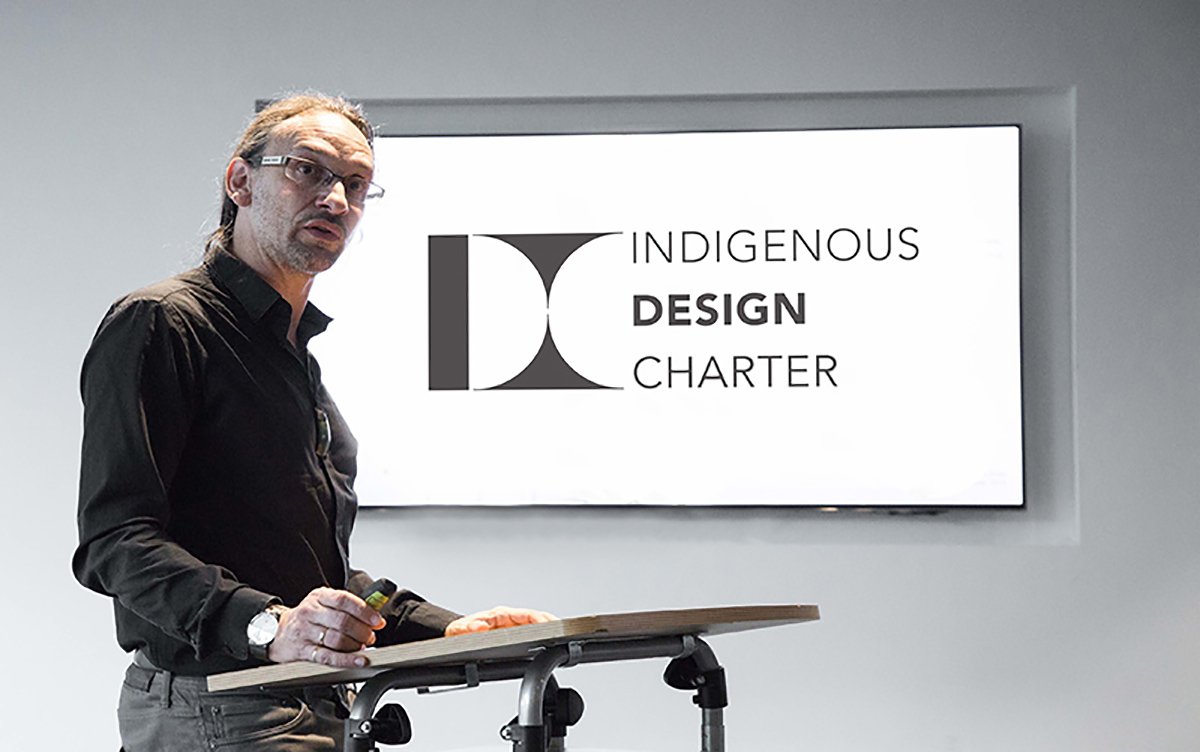How designers can contribute to greater visibility of Aboriginal and Torres Strait Islander culture
We are currently celebrating NAIDOC week and the DIA is reminding members that they have access to a valuable source of advice on how to approach a project that involves the representation of Indigenous culture.
Jefa Greenaway presents the International Indigenous Design Charter. Image: courtesy Premier's Design Awards.
The Indigenous Design Charter: Communication Design was created to provide guidance on the appropriate creation and commercial use of Indigenous graphical representations in communication design practice. It includes a set of ten clearly explained protocols promoting best practice for knowledge sharing, creation, procurement, commissioning and representation of Australian Aboriginal and Torres Strait Islander culture in design practice.
The DIA recognises that designers have not always understood their responsibility to ensure that their work does not unintentionally exploit or disadvantage Indigenous communities. The authors of the Charter note that the establishment of cultural protocols and engagement processes for communication designers represents an important step towards understanding, respecting and representing Aboriginal and Torres Strait Islander views. The aim is to encourage culturally appropriate working practices that value cultural diversity, motivate others and enrich a continually evolving Australian identity.
The Charter asks designers to respect cultural ownership, adhere closely to customs and protocols and gain appropriate individual and community permissions when required. It can be used as a tool to explain the benefits of authentic cultural representation to clients and the process for referencing Australian Aboriginal and Torres Strait Islander knowledge and culture in design.
Importantly, the Charter provides a framework for designers to initiate conversations with clients that encourage accurate and respectful representation of Australian Aboriginal and Torres Strait Islander culture in design. It invites designers to ask clients whether there is an Indigenous story to tell in the project, and provides detailed advice on how to explore this.
Designers are uniquely placed to influence public opinion and build the cultural awareness of their clients. With this comes the opportunity to display leadership in respectful and appropriate engagement with Aboriginal and Torres Strait Islander culture and responsible innovation in co-creation.
The Charter was co-authored by Dr Russell Kennedy and Dr Meghan Kelly from Deakin University, School of Communication and Creative Arts in collaboration with Dr Brian Martin (Muruwari, Bundjalung, Kamilaroi), Deakin University, Institute of Koorie Education (IKE), Jefa Greenaway (Wailwan/Gamillaraay), Indigenous Architecture and Design Victoria (IADV) and the DIA.
In 2017 the Australian Charter was expanded to other design disciplines in the International Indigenous Design Charter for the International Council of Design (ico-D).
The Indigenous Design Charter can be accessed here.


